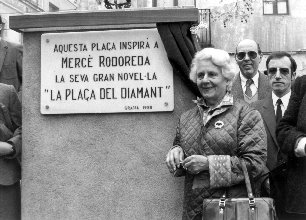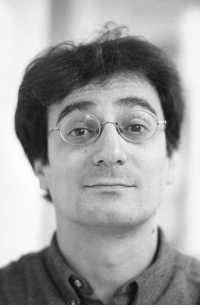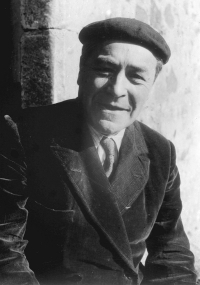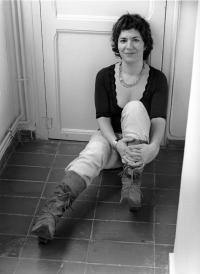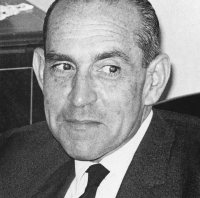

Catalan Literature
Even though the existence of the Catalan language is documented from the 9th century, it was not until the 13th century that it became a literary language, through the exceptional figure of Ramon Llull (1232-1316). This philosopher, who also cultivated poetry, left such classics as Llibre del gentil e los tres savis and Romanç d’Evast e de Blanquerna, containing his most famous work, Llibre d’Amic e Amat.
Between the late 13th and early 14th centuries the deeds of the Catalan kings entered the history of literature in the form of chronicles: the Llibre dels Feits, which narrates the life and conquests of Jaume I (1208-1276); the Llibre del rei en Pere, (also known as Crònica de Bernat Desclot, its author) deals with Pere II, the Great (1240-1285); Crònica de Ramon Muntaner, which describes the lives of several kings, with the central part devoted to Jaume II, the Just (1267-1327); and Crònica de Pere el Cerimoniós (1319-1387).
In the 15th century the Valencian writer Ausiàs March (1400-1459) definitively took Catalan into the realm of poetry. Out of the more than ten thousand lines of verse he wrote, notable works are Cant espiritual, a prayer to God, and Cants de mort, on the death of his wife. In the field of prose the city of Valencia was also the origin of the epic romance Tirant lo Blanc, by Joanot Martorell (1413?–1465?), posthumously published in 1490. A milestone in world literature, Tirant lo Blanc was considered by Miguel de Cervantes in Don Quijote to be the best book in the world for its style. The other great narrative work of the 15th century is the anonymous Curial e Güelfa.
More information at virtual exhibition: 800 Years of Catalan Literature: BEGINNING AND HEIGHT and THE CENTURIES OF TRANSITION
From the 16th to 18th centuries Catalan literature suffered a period of decadence from which it was not to recover until the 19th century, with a movement that called for the recovery of the Catalan language in all its vigour: the Renaixença. Notable in the field of poetry was Jacint Verdaguer (1845-1902), author of L’Atlàntida and Canigó, amongst others, while in prose we must mention Narcís Oller (1846-1930), who wrote Realist novels such as La papallona and La febre d’Or.
More information at virtual exhibition: 800 Years of Catalan Literature: THE “RENAIXENÇA”
At the end of the 19th century this movement led to Modernisme (not the same thing as Modernism in English), which was led by the multifaceted artist Santiago Rusiñol (1861-1931). In the field of poetry this style contributed “la paraula viva” (the live word) Joan Maragall (1860-1911).
With the 20th century came movements such as Noucentisme, the main theoretician of which was Eugeni d’Ors (1881-1954) and the first avant-gardes, with poets such as Josep Carner (1884-1970), Joan Salvat-Papasseit (1894-1924), Carles Riba (1893-1959) and J. V. Foix (1893-1987); prose writers such as Eugeni D’Ors (1881-1954); and dramatists such as Josep M. de Sagarra (1984-1961).
More information at virtual exhibition: 800 Years of Catalan Literature: MODERNITY
At the time of the Civil War and the dictatorship that followed it, outstanding figures are Josep Pla (1897-1981), Mercè Rodoreda (1908-1983), Salvador Espriu (1913-1985) and Josep Maria Folch i Torres (1880-1950).
More information at virtual exhibition: 800 Years of Catalan Literature: THE WAR
Curiously, the restriction of censorship encouraged poetry, with a crop of writers including Bartomeu Rosselló-Pòrcel (1913-1938), Màrius Torres (1910-1942), Pere Quart (1899-1981) and Gabriel Ferrater (1922-1972). In the 1960s, the softening of the dictatorship meant it was possible to publish novels again, such as those by Llorenç Villalonga (1897-1980), Pere Calders (1912-1994) and Avel·lí Artís-Gener (1912-2000).
New life was breathed into novel writing in the following years with leading authors such as Manuel de Pedrolo (1918-1990), Josep M. Espinàs (1927) and Joan Perucho (1920-2003). The essay was taken up again by Joan Fuster (1922-1992).
In the final third of the last century we find poets such as Miquel Martí i Pol (1929-2003) and Joan Vinyoli (1914-1984), and novelists including Jesús Moncada (1941-2005), Quim Monzó (1952), Sergi Pàmies (1960) and Baltasar Porcel (1937), the last three of whom are currently active.
More information at virtual exhibition: 800 Years of Catalan Literature: TODAY
The novel is precisely the genre that has most been cultivated in recent years, thanks to writers such as Alfred Bosch (1961), Emili Teixidor (1933), Francesc Puigpelat (1959), Empar Moliner (1966) and Jordi Puntí (1967). And also thanks to international best-sellers such as Les veus del Pamano, by Jaume Cabré (1947) and La pell freda, by Albert Sánchez Piñol (1965).
As regards poetry, Els Imparables (the Unstoppables) are a group of poets who have created a new, ingenious style. They include writers such as Sebastià Alzamora (1972), Hèctor Lopez Bofill (1973) and Susanna Rafart (1962). Also outstanding in this genre are Narcís Comadira (1942), Enric Casasses (1951), Pere Gimferrer (1945), Feliu Formosa (1934), Josep Palau i Fabre (1917), Joan Margarit (1938) and Jordi Sarsanedas (1924-2006). Among non-fiction writers are Enric Sòria (1958) and Joan Francesc Mira (1939).
More information at virtual exhibition: 800 Years of Catalan Literature
..

